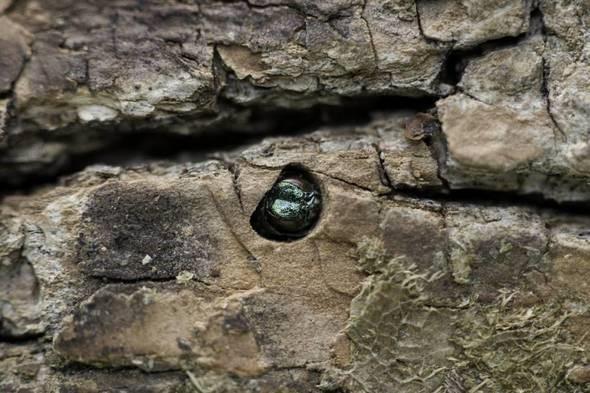
Xplor reconnects kids to nature and helps them find adventure in their own backyard. Free to residents of Missouri.


































Stay in Touch with MDC news, newsletters, events, and manage your subscription

Xplor reconnects kids to nature and helps them find adventure in their own backyard. Free to residents of Missouri.

A monthly publication about conservation in Missouri. Started in 1938, the printed magazine is free to residents of Missouri.


SPRINGFIELD, Mo. – The Missouri Department of Agriculture has confirmed the presence of emerald ash borer (EAB) in Greene and Polk counties, which indicates that this unwanted tree pest is continuing its spread across Missouri.
This exotic beetle was found in specialized traps at three sites in Greene County – along a greenway trail in southwest Springfield, at the Missouri Department of Conservation’s (MDC) Crighton Access southeast of the city, and at Rocky Barrens Conservation Area northwest of Springfield. In Polk County, EAB was confirmed on private property east of Bolivar. It has now been detected in 50 Missouri counties.
The emerald ash borer is a small, metallic green beetle native to Asia that attacks only ash trees. Larvae of this insect bore into the vascular layer beneath the bark of ash trees, creating distinct S-shaped galleries that slowly cut off the flow of water and nutrients from roots to the rest of the tree. Unfortunately, this invasive species kills over 99 percent of the trees it attacks within 3-4 years of infestation.
The emerald ash borer is not new to southwest Missouri – it was found in Laclede County in the winter of 2016 and in Dallas County this past January. MDC Forest Entomologist Robbie Doerhoff urges people who own ash trees to make a plan now to either treat or remove these trees.
“If you have a healthy, high-value ash tree in your yard, it can be treated with insecticides that will protect it from emerald ash borer. However, these treatments must be applied every year or two to guarantee protection,” Doerhoff said. “For some ash trees, especially those that have already lost more than 50 percent of their leaves and branches, the best option is removal, followed by replanting with a different species, such as an oak native to Missouri.”
“If you decide to treat your ash tree, make sure you use an insecticide labeled to kill emerald ash borer and that you apply it at the right time of year,” Doerhoff said. “For large trees that need to be treated by a professional, use a reputable company and get a couple of bids.”
Ash trees that are removed should be disposed of locally to prevent the accidental spread of emerald ash borer to new locations. This insect can emerge from ash firewood and logs for up to two years after harvest, so don’t give it a free ride to a camping location. Buy firewood near where you plan to burn it. A statewide emerald ash borer quarantine established in 2013 by the U.S. and Missouri Departments of Agriculture restricts the movement of ash trees, logs and hardwood firewood from Missouri into states not known to have emerald ash borer.
For more information on protecting your ash tree, download the Emerald Ash Borer Management Guide for Missouri Homeowners at https://short.mdc.mo.gov/ZSq .
MDC encourages Missourians to learn to identify signs of emerald ash borer and report possible infestations in counties where the pest has not yet been confirmed. For a map of the emerald ash borer’s spread across Missouri and detailed information on identification, visit eab.misouri.edu. Report suspected damage in new counties to the local MDC Forester, call MDC’s Forest Pest Hotline at 866-716-9974 or send an e-mail to forest.health@mdc.mo.gov